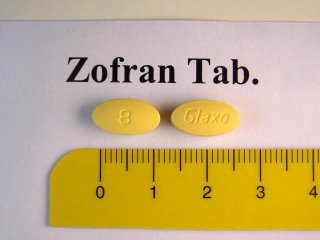
Wednesday, I spent most of the day at the chemotherapy suite at the Grand River Regional Cancer Centre with my wife and a variety of nurses, pharmacists and dieticians. In addition, a friendly orderly kept my up to date on the FIFA World Cup scores as I sat in the recliner receiving my various infusions. Thanks, Dave!
Nothing stands still in the world of chemotherapy. Although my itinerary didn't have a reference to this appointment, the oncology team has added a new infusion of magnesium sulphate and calcium gluconate before the infusion of cancer drugs. This infusion lasts for about an hour and is simply a quick way of getting those minerals into the body. My magnesium and calcium blood levels were good anyway, but the infusion is preventative.
Evidently, researchers have discovered that those minerals enhance the action of drugs like oxaliplatin and 5-fluorouracil in binding with target cancer cells (assuming there are any left in my body - I have to hope that micrometastases don't exist and that everything we're doing right now is strictly speaking unnecessary). Specifically, the minerals help prevent oxaliplatin-related peripheral neuropathy, a side effect which causes tingling sensations in the extremities, including sensitivity to cold and muscle weakness. The effect is cumulative with the FOLFOX protocol, meaning it will get worse during the 8 weeks I receive treatment. Untreated, I could expect problems that could make keyboard use difficult at best. As it is, I have been advised to avoid opening and removing cold items from the refrigerator on the day of treatment. So much for the ice cream sandwich!
After that infusion we started a 2-hour infusion of leucovorin (actually a folic acid vitamin supplement) and oxaliplatin. Prior to doing so, I had to take preventative anti-nausea medication (more on this later in this post) - 3 x 8 mg tablets of zofran and 1 x 4mg tablet of dexamethasone.
Shortly afterwards, as my wife and I sat in the chemotherapy suite, a pharmacist came to talk to us about the treatment protocol, about possible drug interactions, about the anti-nausea medications, and - the big one - possible side effects of both the anti-nausea medications and the chemo drugs. After the 2-hour infusion, another nurse changed the PICC line dressing, implemented a push injection through the PICC line of 5-FU and then connected me to the baby bottle of 5-FU which I will carry with me for the next 46 hours. A CCAC nurse will then visit me at home to disconnect the bottle (I'll be responsible for returning the bottle to the GRRCC chemotherapy suite for proper disposal since it is a biohazard).
One interesting aspect of the 5-FU infusion is that I will be getting exactly the same dosage as I did when I had that drug in Stage 1 when it acted as a radiation sensitizer. But instead of getting that dosage in 2 stages over 2 weeks, the dosage is collapsed and accelerated from 2 weeks to 2 days. No wonder the cancer centre staff are so diligent about educating patients on possible side effects!
One advantage of being under the care of CCAC nurses is that medication prescribed by the oncologists is completely covered by the CCAC during the time period in which they provide home care. We discovered today with the Zofran just how much of an economic advantage that is (we had already seen a tremendous advantage with Flomax and Pariet). Four pills cost over $90!
The anti-nause (anti-emetics) medication has a very specific and detailed schedule. The pharmacist at the GRRCC explained it all to my wife and me and provided us with a colour-coded calendar showing precisely when and how many tablets I have to take. Thank goodness I have a pocket PC, alarms on my watch, and a good notebook computer to help me remember all the medications and how and when the drugs should be administered.
I know. Too much detail in this post. But perhaps someone else undergoing chemotherapy for colorectal cancer can benefit from the information. In addition, I can always come back for reference purposes.
Powered By Qumana

No comments:
Post a Comment